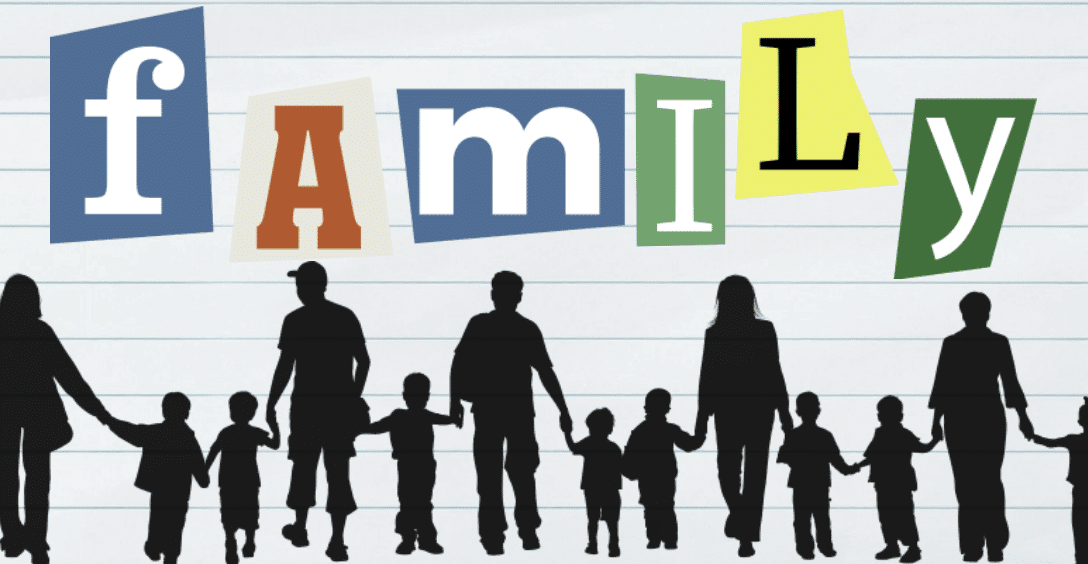How Family Dynamics Influence Addiction and Recovery

Understanding Addiction as a Family Disease
Addiction is often described as a family disease. This description captures the reality that substance abuse or addictive behaviors impact not just individuals, but their entire families – parents, siblings, partners, and children alike. While the person struggling with addiction often carries the visible signs of the disorder, family members quietly endure emotional, financial, and psychological burdens that ripple throughout the household. These stressors frequently go unacknowledged and untreated, contributing to long-standing tension and dysfunction within the family system.
The bonds and interactions within a family significantly influence behaviors around substance abuse. Family dynamics, which refer to the patterns of relating among family members, can either support recovery or perpetuate addiction. Dysfunctional communication, enabling behaviors, or rigid role assignments within families can all unwittingly maintain addiction. Conversely, supportive family dynamics characterized by open communication, healthy boundaries, and mutual respect are key factors in lasting recovery.
Understanding how these dynamics function and how they can be altered is crucial for anyone dealing with addiction. It allows families to become active participants in the recovery journey, transforming their relationships into sources of strength rather than stress. At Williamsville Wellness, family therapy can be incorporated into individual treatment plans based on the patient’s needs and comfort level, providing an additional layer of support and helping families break free from cycles of addiction.
In this article, we’ll explore how family dynamics influence addiction, discuss specific roles family members often adopt in response to addiction, and highlight practical strategies families can implement to support recovery. Our aim is to provide insights and actionable advice that helps families build resilience, facilitate healing, and ultimately promote long-term sobriety and well-being.

Family Systems Theory and Addiction
Family Systems Theory is an approach developed by psychiatrist Dr. Murray Bowen, emphasizing that individuals cannot be fully understood in isolation but rather as part of their family, a complex emotional unit. According to this theory, family members are deeply interconnected, meaning the thoughts, feelings, and behaviors of one member inevitably influence the others. When addiction enters this dynamic, it has profound and often complicated effects across the entire family system.
In families impacted by addiction, certain unhealthy patterns often emerge as coping mechanisms. These patterns typically involve attempts to manage the stress or shame associated with addiction, but frequently end up reinforcing addictive behaviors rather than alleviating them. For instance, one common pattern is enabling. Enabling occurs when family members – often with the best of intentions – attempt to shield the addicted individual from consequences of their actions. This may involve repeatedly covering financial costs, lying or making excuses on their behalf, or minimizing the severity of the addiction to others.
Additionally, addiction frequently leads to dysfunctional communication styles within families. Instead of openly addressing issues, families might develop unspoken rules, such as “don’t talk about it” or “pretend everything is normal.” This secrecy creates an environment of isolation, misunderstanding, and shame – emotions that paradoxically can drive the addicted individual further into substance use as a coping strategy.
Family Systems Theory also identifies the concept of the “identified patient.” In addiction, this term often refers to the person whose substance use has become the focal point of the family’s problems, drawing attention away from underlying systemic issues. Other family members might unconsciously contribute to maintaining this role, as it provides a distraction from addressing deeper dysfunctions within the family structure, such as marital conflicts, unresolved trauma, or financial stress.
At Williamsville Wellness, we understand that addressing addiction effectively often means addressing these underlying family patterns and dynamics. Our approach, which integrates elements of Family Systems Theory, involves examining the broader family context in therapy sessions – particularly when patients express a desire for family involvement. This allows patients and their families to explore, understand, and ultimately alter these dynamics together.
For example, during residential treatment at Williamsville Wellness, therapists can facilitate family sessions when deemed beneficial. These sessions might involve identifying enabling behaviors, practicing healthier communication strategies, or addressing unresolved conflicts that have contributed to substance misuse. Such interventions help family members to recognize their roles within the family unit clearly and empower them to make positive changes that support sustained recovery.
Family Systems Theory, therefore, provides a crucial lens through which family dynamics and addiction can be understood – not simply as an individual challenge but as a reflection of a broader set of familial relationships and interactions. By addressing and adjusting these underlying dynamics, families are not only supporting recovery but also fostering deeper, healthier connections that benefit every family member involved.
Common Family Roles in Addicted Households
In families struggling with addiction, members often adopt specific roles as coping mechanisms. While these roles typically form subconsciously, they profoundly influence family interactions and can unintentionally maintain or even intensify addictive behaviors. Recognizing these roles clearly is an essential first step toward breaking unhealthy patterns and establishing healthier, more supportive family dynamics.
The Hero
The ‘Hero’ in an addicted family often emerges as the high-achieving, responsible figure. This family member strives to present a perfect facade to the outside world, excelling academically, professionally, or socially. Their accomplishments attempt to compensate for family shame or embarrassment associated with addiction, seeking validation externally. While the Hero appears resilient and unaffected on the outside, internally they frequently feel overwhelming pressure, anxiety, and self-doubt. They may struggle with burnout, guilt over “letting the family down,” and a persistent fear that any misstep will expose the family’s pain.

The Enabler (Caretaker)
The Scapegoat typically adopts the opposite stance of the Hero. Instead of drawing positive attention, they become the ‘problem child’ who acts out, rebels, or engages in risky behavior. Scapegoats draw negative attention onto themselves, unintentionally diverting the family’s focus away from underlying issues, including the addiction itself. Ironically, while Scapegoats seem disruptive, their role maintains a delicate balance within the family structure by giving everyone something else to criticize. As a result, they often feel misunderstood, isolated, and carry deep hurt or low self-esteem – sacrificing their own well-being to shield the family from facing its core pain.
The Scapegoat
The Scapegoat typically adopts the opposite stance of the Hero. Instead of drawing positive attention, they become the problem child who acts out, rebels, or engages in risky behavior. Scapegoats draw negative attention onto themselves, unintentionally diverting the family’s focus away from underlying issues, including the addiction itself. In doing so, they give everyone something else to blame and temporarily relieve tension – but over time they often feel angry, misunderstood, and trapped by a role they never asked for.

The Lost Child
The Lost Child is the quiet family member who withdraws, becoming nearly invisible within the family system. They avoid conflict or attention by retreating into solitude, often focusing on reading, online activities, or other solitary hobbies. While this role shields them from chaos, it frequently leads to feelings of loneliness, isolation, and low self-worth. As adults they may struggle with intimacy, setting boundaries, or speaking up for their own needs.

The Mascot
The Mascot uses humor or charm to ease tension and conflict in the family. They step in with jokes or distractions whenever stress is rising, making others laugh and lightening the mood. Beneath that cheerful exterior, however, lies deep anxiety, fear, and a sense of insecurity. By keeping things light they prevent the family from facing serious issues, including the addiction itself, and they often feel unseen in their own pain.
How Family Dynamics Influence Addiction
While addiction may begin for a variety of reasons – genetics, trauma, social pressure, or unmanaged mental health – family dynamics can play a powerful role in reinforcing and prolonging it. These dynamics don’t cause addiction on their own, but they often create an environment where substance use becomes a way of coping with emotional or relational stress.

One of the most common and detrimental family patterns is enabling. Enabling occurs when a family member, often without realizing it, makes it easier for the person with addiction to continue their behavior. This might look like giving money that ends up funding substance use, covering up consequences (e.g., calling in sick for them at work), or downplaying the severity of the addiction to others.
At Williamsville Wellness, we often work with families to gently explore how enabling may be showing up in their behavior. During individual counseling sessions, patients learn to reflect on how the actions of those around them have impacted their addiction – and how to set clearer, healthier boundaries moving forward.
In many families dealing with addiction, a form of emotional entanglement known as codependency develops. Codependent family members may derive their sense of identity or purpose from trying to “fix” or “save” the addicted individual. Over time, this creates an unhealthy dynamic where the addicted person becomes central to the family’s functioning, and the codependent member sacrifices their own well-being to maintain that connection.
These relational patterns are not only exhausting, but also deeply unsustainable. They can worsen emotional instability and keep both people stuck in dysfunctional roles. Through group therapy and psychoeducation offered during treatment, individuals begin to unlearn these patterns and build more autonomous, emotionally regulated relationships.
Addiction often runs in families, not just because of genetics, but because of learned behavior. Children who grow up in homes where substance use is normalized may develop an increased tolerance for emotional chaos, secrecy, or dysfunctional conflict resolution. Additionally, unaddressed trauma is frequently passed down through generations, affecting how families manage emotions and respond to stress.
At Williamsville Wellness, we recognize the importance of treating trauma alongside addiction. Therapists may incorporate techniques like Cognitive Behavioral Therapy (CBT) and Dialectical Behavior Therapy (DBT) to help patients uncover and challenge the core beliefs that fuel both trauma responses and substance use.
These family-based dynamics, while often invisible, are deeply impactful. But with awareness, education, and professional support, they can be identified, addressed, and changed.
Breaking the Cycle with Family Therapy
Family therapy, when incorporated as part of an individual’s treatment plan, can offer powerful insight and healing for all parties involved. While not every patient may choose to involve their family, those who do often find that addressing relational dynamics enhances their personal recovery and provides families with new tools to move forward together.
At Williamsville Wellness, family involvement may include joint therapy sessions that explore communication breakdowns, unresolved emotional wounds, or cycles of enabling behavior. These sessions are facilitated by licensed therapists trained in approaches like Family Systems Therapy, Cognitive Behavioral Therapy (CBT), and Emotionally Focused Therapy. These evidence-based modalities empower families to move beyond blame and into collaborative healing.
When appropriate, sessions may also incorporate experiential exercises or education on boundary-setting and emotional regulation. These tools help family members shift out of rigid roles and instead learn how to support one another through healthy interaction and accountability. By addressing these relational patterns directly, the therapeutic space becomes a place not just for understanding addiction, but for healing long-standing family wounds that may have contributed to it.

Education and Boundaries for Families
Education is one of the most powerful tools families can use in their recovery journey. By learning about the biological, psychological, and environmental roots of addiction, families can begin to shift away from shame-based thinking and toward a more compassionate, informed perspective. Understanding that addiction is a chronic medical condition, rather than a moral failure, helps reduce stigma and allows families to reframe their role in the healing process.
At Williamsville Wellness, psychoeducation is often woven into therapy to ensure family members better understand the mechanisms of addiction and the emotional needs of their loved ones. Families learn about relapse warning signs, stress cycles, and how their communication style can either support or sabotage progress.
Equally essential is the practice of setting and maintaining healthy boundaries. Without them, family members may find themselves slipping into codependent roles, overextending their emotional energy, or unknowingly enabling destructive behavior. Boundaries create space for both accountability and respect, they are not barriers, but bridges that protect both the person in recovery and their loved ones from falling into old patterns.

Why Williamsville Wellness?
Healing from addiction is never a solo journey, nor should it be. As we’ve explored, family dynamics and addiction are closely linked, and family relationships can be one of the most influential forces either perpetuating the cycle of addiction or paving the way toward lasting recovery. By understanding the roles we play, the communication patterns we default to, and the emotional legacies we carry, families can become powerful allies in the treatment process.
At Williamsville Wellness, we see every patient as part of a broader system. Whether through individual therapy, group sessions, or family involvement, we guide patients and their loved ones in breaking harmful cycles and replacing them with compassion, resilience, and honest connection.
Final Thoughts
If you’re supporting someone struggling with addiction, or if you recognize these family dynamics in your own life, don’t wait. Reach out to us today to learn how our holistic, personalized treatment can support your family’s path to healing.

